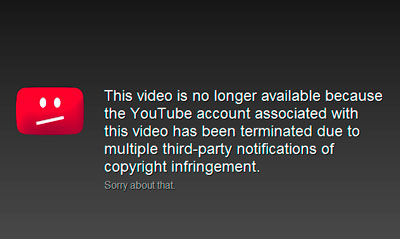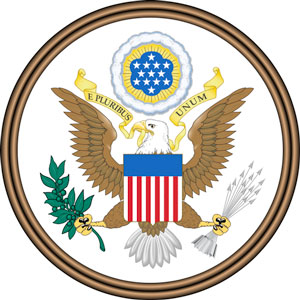Law and Order 101:
Image theft examined and explained (Part three)
This article continues the conversation about image theft started in “Law and Order 101: Image theft examined and explained (Part one)” and “Law and Order 101: Image theft examined and explained (Part two)“.
If you have not had a chance to read the first two parts, may we recommend it to your attention, as it might help to understand some parlance we use throughout this article.
In the first two installments, we went over the “persona” – the group traits of the people and companies that use your images for commercial purposes without asking for your permission, and over the most common prevention tactics, both technical and business-wise. In this part, we will talk about “waging the war” – taking the steps to assert your rights against an offender.
Again, I would like to stress that we are specifically focusing the conversation on the images used for commercial purposes (advertisement, merchandizing, calendars etc.) – someone who might downloads your image and put it on the wall, sets a regrettable example but is unlikely to make any profit off off it and thus the whole matter becomes a question of morale rather than business.
To chase or not to chase?
 Okay, so it is one of those days when someone tips you that your image was seen in such-and-such place and the tipster is curios what in the world prompted you to put it there… Which is a sure indication that it was done unbeknownst to you. Now, you need to decide whether to chase down the offender or simply write it off and make a nice dinner table story out of it. It is a very personal decision and there is no one answer to that question. Yet, there are few things to consider before engaging into the full-fledged war:
Okay, so it is one of those days when someone tips you that your image was seen in such-and-such place and the tipster is curios what in the world prompted you to put it there… Which is a sure indication that it was done unbeknownst to you. Now, you need to decide whether to chase down the offender or simply write it off and make a nice dinner table story out of it. It is a very personal decision and there is no one answer to that question. Yet, there are few things to consider before engaging into the full-fledged war:
- First and foremost, is it going to be worth your while? Every theft is offending and undoubtedly, your personal feelings are hurt. But realistically, most “bottom feeders” are not worth to be dealt with and your time would be much better spent on assessing the situation (see the “Prevention” chapter above) than on chasing a “bottom feeder”
- How often does it happen? As with every business, it’s best to have a certain percentage of “business losses” built into your plan. Petty theft is almost inevitable but if it stays withing the comfortable levels that you set for yourself, then your time would be much better employed by creating images than by chasing the offenders
- If you are positive that this particular incident needs to be pursued and there must be some justice dispensed upon the offender – ask yourself what exactly do you want to achieve? Do you want the offender to “cease and desist”? Or are you going for the money? Do you know how much? If you don’t, then no lawyer or judge in the world will help you
As you can probably see, I’m trying to dampen your appetite for chasing the “small fish” and channel your energy into assessing and preventing the future incidents. But if the fish you are about to fry is not so small and it is clearly the time to stand your own, then you need to start preparing for the battle. The next chapter goes over how to wage the war.
Throwing down the gauntlet
All right… You have hunted down the thief and you are ready to wage the war. The very first thing to remember: be calm. Don’t shoot yourself in the foot by taking any hasty actions! At that point, you have a few options as far as your course of action concerned:
- What is the thief’s domicile? In other words, where in the world does he live? If he lives outside of North America (US and Canada), then your only practical option is to pursue the “take down” route (see below) unless you are prepared to foot the bill for the international litigation, which will in many cases will exceed the awarded damage
- If the thief is a US entity (whether a person or a company), then you have an additional option to take him to the cleaners. Whether you should do so will be largely determined by two factors: the size of the offender (whether he is a “bottom feeder” or something more substantial) and whether you have registered your work with the Copyright Office (see “Registering your work” section in Part Two).Why the registration is important? For two reasons:
First, it gives you an equivalent of bazooka and chainsaw combined.It is exceedingly hard to argue with the federal certificate, you know…The second reason is that registering your work will allow you to pursue your case in the Federal Court and consequently demand damages, whereas in the case of unregistered work you may be forced to accept compensation for the costs related to creation of the image(s) (in other words, studio expenses) and your process will be much more cumbersome.One interesting tidbit that speaks in favor of registering your work: the majority of the cases involving registered work is settled outside of the court.In other words, when the offender faces the bulletproof evidence in the form of the copyright certificate, (s)he will often times concede and negotiate the payoff without even going to the court, because it is better to pay up than face the costly litigation and a very real prospect of having to pay not only the usage but also the damages and attorney fees.
But even if you have not registered your work, you still can make your case in the court – but you will need to work harder for it…
Regardless of which route you take, your first step will be the same: collecting the evidence. Luckily, it is not that hard: you will need to take screenshots of the offender’s website(s) and other available materials (preferably with the date/time stamp somehow visible or evident) and also gather the documentation on your side – corresponding images, copyright certificates (if you have them) etc.
The next step will depend on who the offender is and whether you are taking him to the court:
- Are we dealing with a “bottom feeder”? If so, it is probably not worth your while to take him to the court. Serve him a digital equivalent of “Cease and desist notice” (see “Take it down!” section).
- Is our subject more than just a “bottom feeder” (i.e. does he fall into the “medium size” group)? If so, is he a US entity? If not, then in most cases you are better off with the “Take it down” route. If the offender is domiciled in the US, then you can pursue either route BUT not both at the same time! Again, don’t jeopardize you case by taking hasty actions. Move steadily and with resolve.
- Are we dealing with a “big guy”? In this case, you will need to consult a lawyer and very likely proceed with a lawsuit. See the “Taking the case to the court of law” section below.
No matter what you choose, the key thing is to stay calm and avoid any hasty actions. The last thing you want is to play into the hand of the criminal, so for the sake of all that’s good – calm down and move slowly but steadily.
Take it down!

“Take down” request is a digital equivalent of “cease and desist” notice. It is directed at the web site owner AND at his hosting provider. As most of the small web sites are hosted by some provider or other, this tactic is quite effective against the “bottom feeders”.
Just remember: if you are trying to take the guy to the court, then you need to hold off on any ” take down” actions until you have discussed the matter with your lawyer. If you are not going down the lawsuit route, then the following steps will likely result in your images to be taken down from the offending site and may also cause the offender’s hosting account suspension. It won’t put any money in your pocket but it will certainly put the bad guys on alert.
- First, find who is the ISP (internet service provider)/registrar in question. WhoIs service can tell you most of the information you need (see “Further reading” section below for the links). If you are not a technical person, ask your friends or their college kids.
- Once you have figured out who hosts the site in question, go to the hosting company web site and file a copyright infringement notice. Link to the GoDaddy infringement form can be found here and most other providers will have a similar link.
- Another useful resource is a sample “DMCA Takedown notice” provided by Carolyn E. Wright – you can find it here.
- Once you have taken care of submitting the claim, you may want to let Google know of the bad guys at large. Google allows you to request site content removal from the index based on the copyright infringement or other illegal activities. The removal request page can be found here.
To the point: A very useful and inspiring article on how to deal with the “take down” situation can be found here (http://www.photigy.com/breaking-a-copyright-law-a-story-of-how-to-fast-and-efficiently-kill-your-career/)
Taking the case to the court of law

At this point, my only advice is to hire a competent lawyer and follow his recommendations. Based on my own experience, hiring a recent law school graduate for less is not a very bright idea – you need a person who is experienced in arguing the copyright cases and has a verifiable track record in the field.
I can’t stress this enough – you need not just any lawyer, you need a person who focuses specifically on the copyright law and had worked with photographers in the past. What that means in plain English is that your friend’s divorce attorney is a poor choice (even though he might be eager to take the case). Should everything else fail, your local APA/ASMP chapter should be able to suggest a couple of names.
Also worth remembering: the majority of the copyright cases settle before they hit the court system. Having a competent representation is crucial, don’t you ever dream of navigating the maze of the arbitration and copyright law on your own!
Further reading
- This Wikipedia article on Digital Millennium Copyright Act is a great source of information. It is also a great way to fall asleep 🙂
- A great Wikipedia article on “Online Copyright Infringement Liability Limitation Act” can be found here. Great resource on many copyright-related topics, including “take down” and “put back” provisions and procedures.
- A very detailed illustrated step-by-step tutorial on the entire “take down” procedure can be found here (dpreview.com).
- There is no shortage on write-ups and “copyright myth-busters” all over the Internet. One of the more useful (and certainly a humanly readable one) can be found here. Also, the Smashing Magazine added its share to the ever growing heap of copyright-related essays – this one is comprehensive but rather dry.
- WhoIs (www.whois.net) is a service that can tell you who is the ISP (provider) for the web site of interest. Many large providers have WhoIs lookup links on their websites as well. Another good WhoIs implementation can be found here (Network Solutions WhoIs). Be advised – the WhoIs reports are not for the faint in the heart and require some considerable knowledge of technical jargon.
- Creative Commons web site can be found here – a tad dry yet informative reading



 Only for Pro Club Members
Only for Pro Club Members